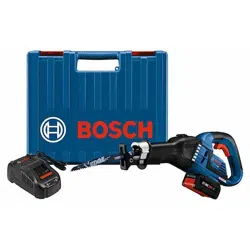Loading ...
Loading ...
Loading ...

1. Blades cut on the draw or back stroke. On
f
ine work, such as paneling, fiberglass, etc.,
place the good side of workpiece facing
down.
2. Use the correct saw blade for the material
being cut and keep extra blades on hand to
use when others become dull. Replace
cracked or bent blades immediately.
3. Select the appropriate cutting speed.
4. To reduce the risk of injury, be sure the
blade always extends beyond the footplate
and work throughout the stroke. Blades
may shatter if the front on the blade hits the
work and/or the footplate.
5. When cutting metal:
- Apply a lubricant for easier, smoother,
faster cutting and longer blade life.
- For non-ferrous metals, aluminum,
bronze or brass, use a stick wax on the
blade.
- For ferrous metals, iron and steel, use
machine or cutting oil along the surface
to be cut.
6. When cutting thin metal, "sandwich" the
material between two pieces of scrap wood.
Clamp or put in a bench vise. One piece of
lumber on top of the metal can be used with
adequate clamping. Place your cut lines or
design on the wood.
7. Don’t force the cutting. Let the saw and
blade do the work.
POCKET/PLUNGE CUTS
The reciprocating saw can be used to make
plunge cuts into softer material, (for
example, wood or light building materials for
walls), without a starting hole (Fig. 7).
1. Mark the line to be cut clearly on the work.
2. Set the tool with one edge of the footplate
firmly against the material.
3. Place the tip of the blade (not running) on
the line to be cut.
4. Tilt the saw so that the blade clears the
work.
5. Squeeze the trigger switch and carefully
engage the moving saw blade into the
material.
6. After the blade penetrates through the work,
continue sawing along the marked outline.
Notes:
To make plunge cutting easier, use a heavy
gauge blade, install the blade with the teeth
facing upward, and hold the saw upside down
as shown (Fig. 8).
Do not plunge cut in metal surfaces.
In thick materials and in harder materials, such
as metal, plunge cutting should not be
attempted. Such materials can be cut with the
reciprocating saw only by starting the cut from
the edge of the material or from a hole drilled
all the way through the material that is large
enough to fit the saw blade.
WRONG RIGHT
-11-
FIG. 7
FIG. 8
1607000CE4.qxp_GSA18V-125 4/11/17 3:08 PM Page 11
Loading ...
Loading ...
Loading ...
